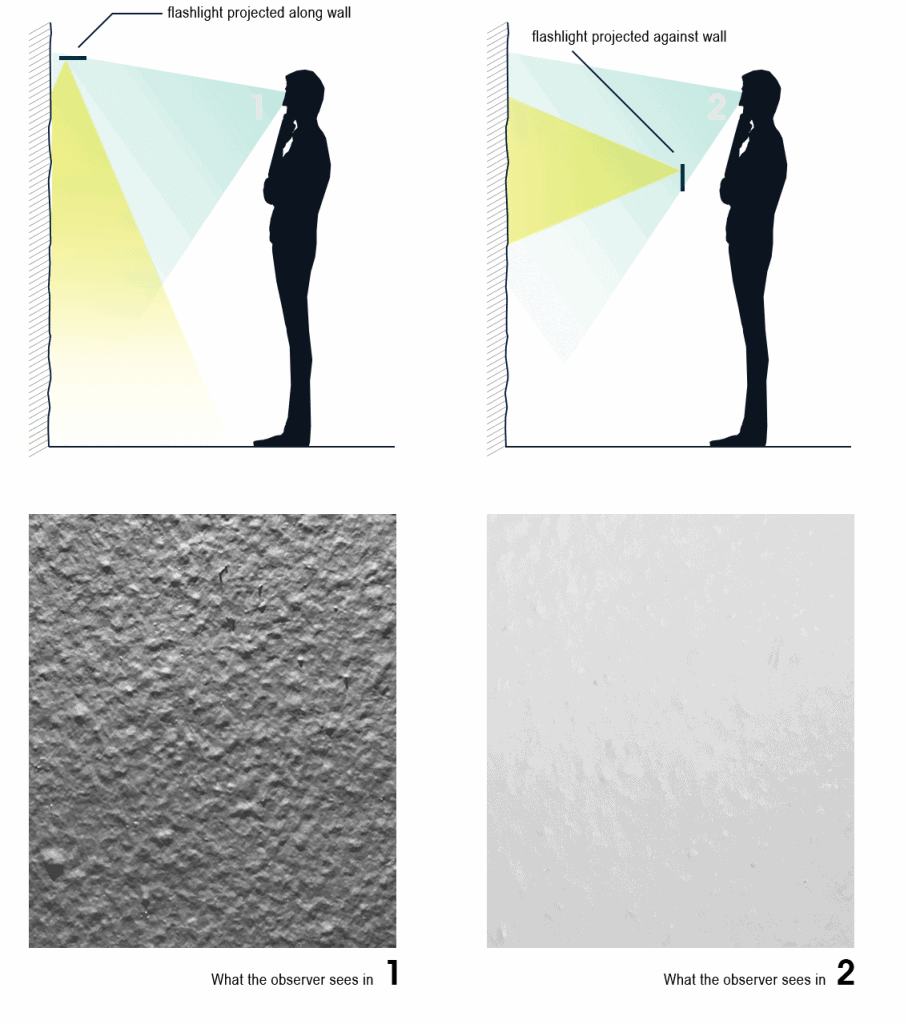
Visual Perception
As humans, our ability to visually perceive our surrounding environment is highly dependent on light. Our eyes are constantly at work collecting surrounding visual data. When passed to the mind in a process called active information seeking, around 90% of the collected data is lost according to psychologist Richard Gregory.
With the remaining 10% stored, combined with previously stored information, the mind relies on 3 components. Its attributive component, where the mind bases information off of experiences. For example, the visual texture of bare concrete or a series of streetlights. This then relies on it expectative component, where the mind is programmed to predict an understanding of the image. Since we already know that bare concrete has a rugged texture, due to the way the natural light falls on it, forming little shadows under every bump or that streetlights are continuous along the span of a street, we can expect that the rest of the street will continue to be illuminated. Which leads to the effective component, the mind’s response to the image it’s seeing. Since our brains are already familiar with the idea of the patterns of the street lights. The context of the lights is quickly set, without having to consciously be aware of every lamp on the street, or in the case of the concrete, we can already imagine the rough feeling of its texture without having to actually touch it.
With this considered, we can understand how reliant we are on light as humans. Light forms the entirety of our visual perception, helping us to identify the basic characteristics of any form of surface or object. Bringing back the example of concrete, we identified concrete as a rough texture due to its shadow effects, caused by natural light being projected from above. If we were to move this light so that it’s hitting the surface at a 90-degree angle, this would then eliminate the shadows. Visually this would create a soft surface. Using the same coated concrete wall, for both light directions, we were able to test this at the office using a flashlight as shown in the diagram.
That being said, we can understand that light gives us the ability to manipulate the perception of a surface or object. But, before doing so, we should identify its characteristics so we can then begin to understand its needs.

Office Address
Ofis In Maltepe Business Center,
Aydinevler Mah. Durak Sk No:3,
A/2, 34854 Maltepe,
Istanbul, Turkey
planlux@planlux.net
+90 216 327 37 77
Opening Hours
Monday — Friday 09am – 6pm
Saturday — Closed
Sunday — Closed
Philosophy
“We guide you to work with light. ”
Office Address
Ofis In Maltepe Business Center,
Aydinevler Mah. Durak Sk No:3,
A/2, 34854 Maltepe,
Istanbul, Turkey
planlux@planlux.net
+90 216 327 37 77
Opening Hours
Monday — Friday 09am – 6pm
Saturday — Closed
Sunday — Closed
Philosophy
“We guide you to work with light. ”
You will now be asked to fill a short form to share information for us to reach you.
Planlux takes this obligation seriously to protect the personal data that we collect, use, share, and process.
When you apply, you are deemed to have accepted our PRIVACY NOTICE that tells you what to expect when you provide information.
GO!
You will now be asked to fill a short form to share information for us to reach you.
Planlux takes this obligation seriously to protect the personal data that we collect, use, share, and process.
When you apply, you are deemed to have accepted our PRIVACY NOTICE that tells you what to expect when you provide information.
GO!


